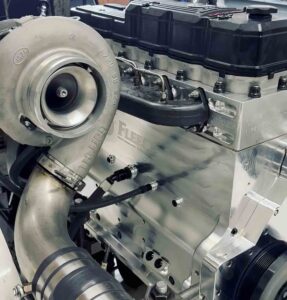HEADLINES: What Is Your L5P Duramax Leaving On The Table?
Cummins carnage, high-horsepower dyno testing, SAC vs. VCO injectors, and the EPA finalizes emissions standards only EV’s can meet…
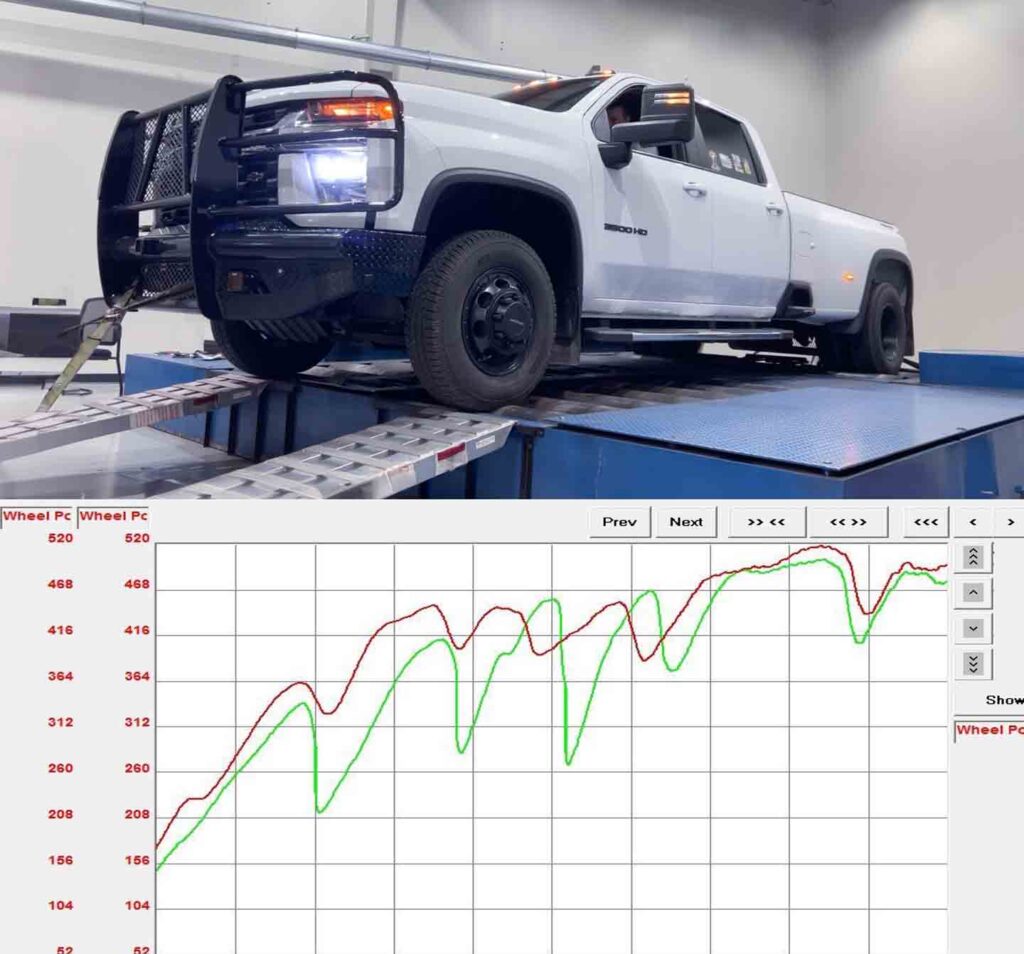
PUBLIC SERVICE ANNOUNCEMENT: This horrendous looking graph represents the horsepower your stock, 10-speed Allison equipped Chevrolet or GMC HD sends to the wheels. Luckily, DuramaxTuner.com has a solution, and it’s a fix that exists in the form of transmission control module (TCM) tuning. In addition to the company’s TCM tuning improving the clunky shifting of the 10L1000, it also increases your truck’s peak and (more importantly) average horsepower making it to the tires. With your 10-speed Allison’s shift points fine-tuned, you can put all of the L5P engine’s power to use—and do so with utmost transmission safety in mind.
Drag Racing
Ring Racing Goes 4.03 at 184 mph—Then Carnage Strikes
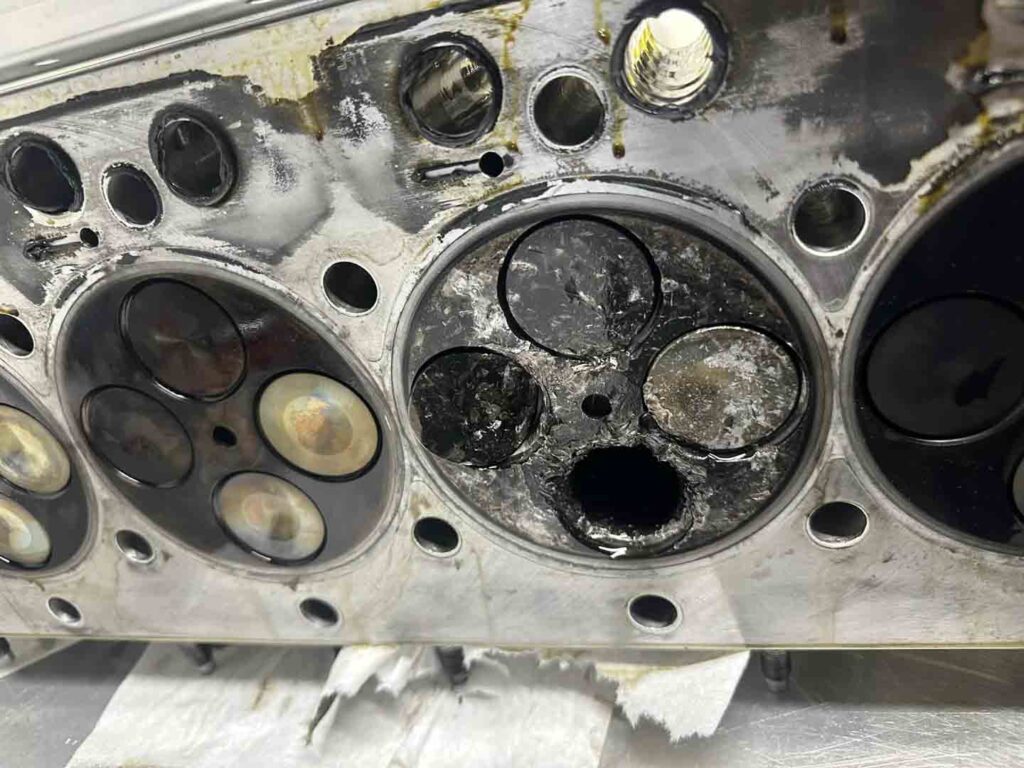
The good news is Jared Ring’s Cummins-powered Pro 275 Cadillac ATS-V ran a new best over the weekend and continues to march toward its first 3-second eighth-mile pass. The bad news is that a valve failure took the Ring Racing team out of contention after the car’s first round qualifier at the Bama Outlaws event at Alabama International Dragway. The late-pass melee produced a bang, a fire, plenty of smoke, a broken windshield, and a damaged hood. However, despite low visibility Jared was able to keep the Caddy centered on the track and away from the wall. We’re told repairs are already underway and the car will be ready for the next stop on the Radial Outlaws Racing Series.
Class Is In Session At Firepunk Diesel
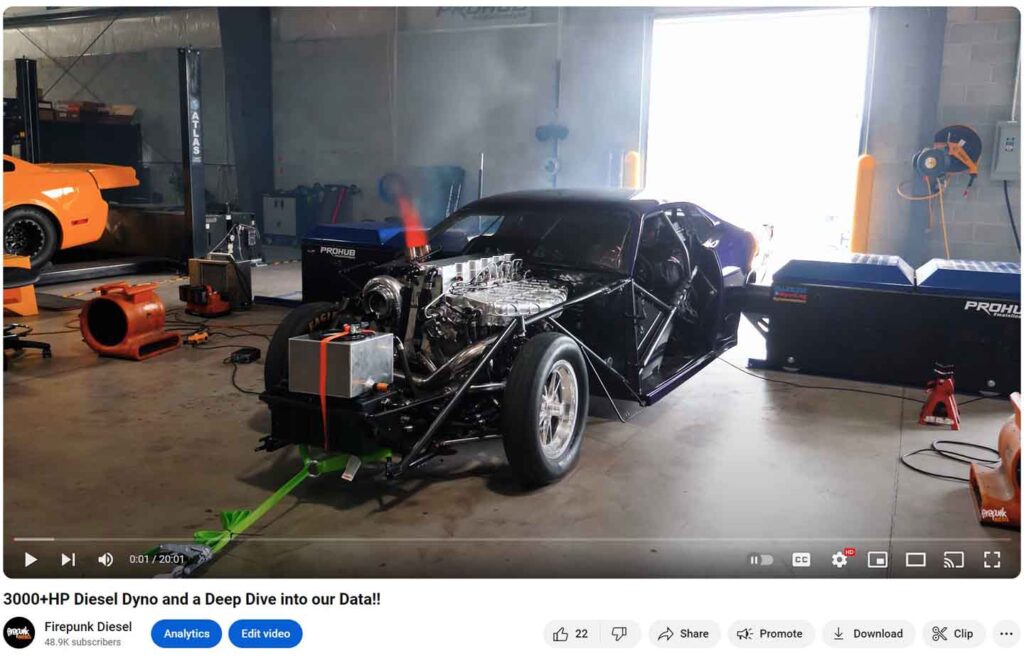
Firepunk. Always testing. Always learning. Always Teaching. After returning to the hub dyno following a melted piston scenario back in February, the guys at Firepunk Diesel disclosed the changes made to their Pro Mod Duster as well as why they made them. First and foremost, less timing is now being called for, and the engine is running small bowl pistons. Other changes include 143-degree spray angle, 6.7L-based injectors and an air-to-water intercooler (integrated within the billet aluminum intake manifold). Across all tests, the same, 920 microseconds of injector duration and 25 degrees of timing (at 5,200 rpm) were maintained, with nitrous being incrementally brought into the equation. Long story short, the D&J Executioner Cummins is extremely happy with the car making 2,861 hp. Check out the full video here.
Injector Tech
What’s the Difference? SAC vs. VCO Nozzles
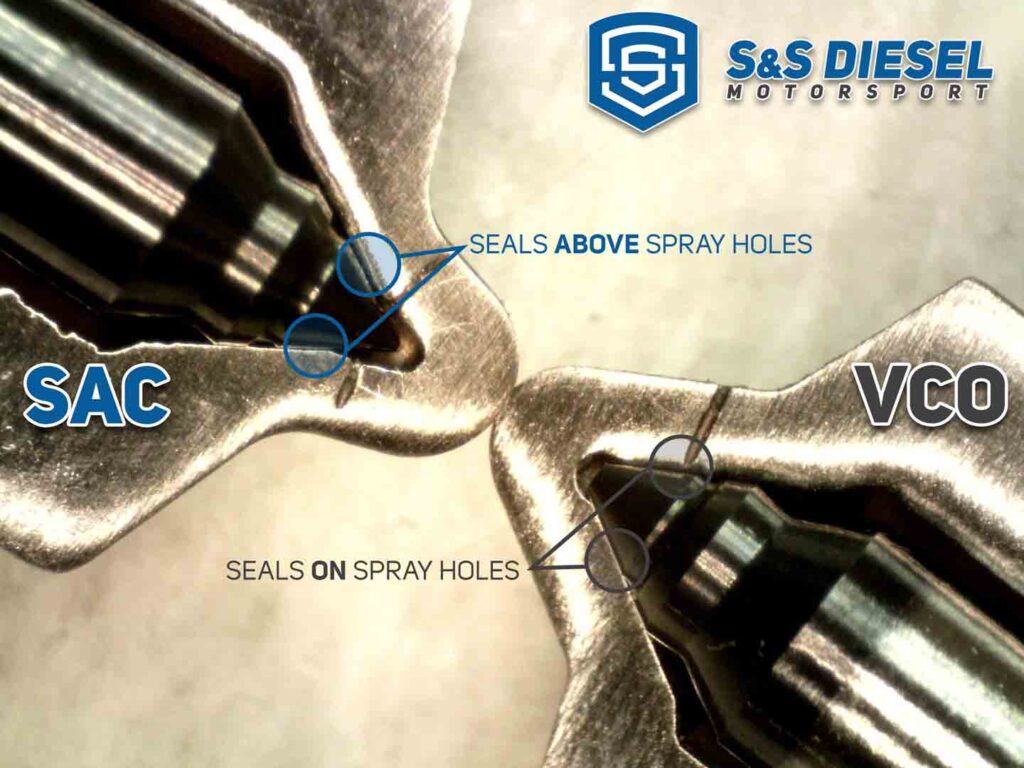
If you’ve ever wondered why SAC style injector nozzles are more durable than VCO nozzles, S&S Diesel Motorsport has you covered. For starters, SAC nozzles seal above the spray holes, whereas VCO nozzles have to seal on top of every spray hole (and any damage or erosion on one of its many sealing surfaces will cause a leak). The SAC needle also seats well above the spray holes and seals on one sizeable circular taper (and S&S notes that it isn’t as sensitive to erosion where the needle sits within the nozzle bore). It’s no wonder why OE’s switched to a SAC style nozzle design 15 years ago and haven’t looked back.
Emissions
The EPA’s 2027 Multi Pollutant Emissions Standards Will Effectively Ban ICE-Powered Cars And Trucks

The Environmental Protection Agency recently finalized its emission standards for 2027-later model year light-duty vehicles. By 2032, the regulations require all cars and trucks sold in the U.S. to meet a fleetwide tailpipe emissions average of 85 grams of CO2 per mile. At present, only electric vehicles and just five plug-in hybrids are capable of meeting that standard. According to the American Fuel & Petrochemical Manufacturers (AFPM), the new emission standards are designed to force electric vehicle adoption. And as far as Diana Furchtgott-Roth, Director of Center for Energy, Climate, and Environment at The Heritage Foundation, is concerned, “This rule will hurt working-class Americans, small businesses, and farmers by effectively banning the sale of gasoline-powered vehicles in America—while having practically no effect on global temperatures.”
Written by Mike McGlothlin


